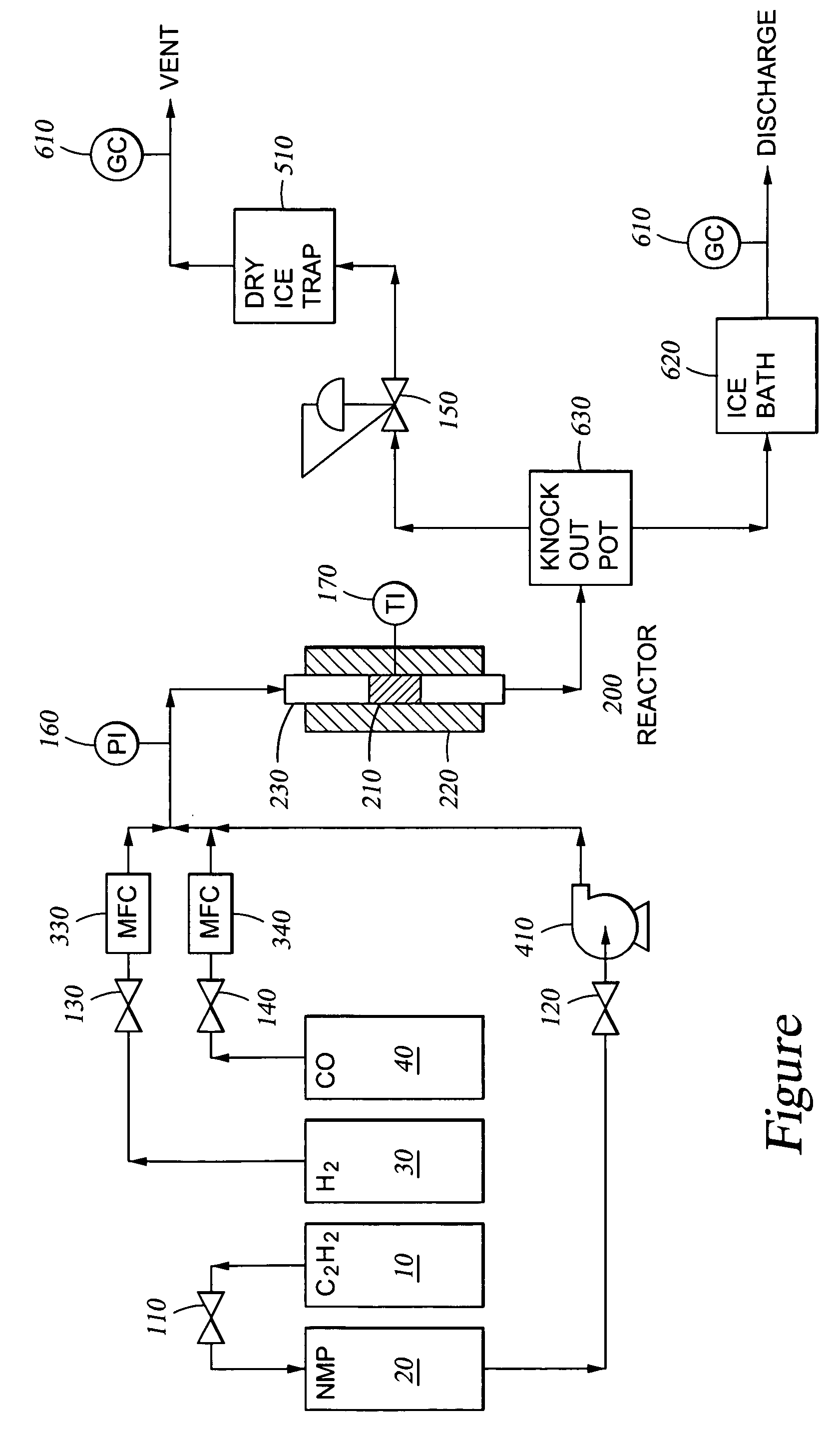Process for liquid phase hydrogenation
a liquid phase hydrogenation and process technology, applied in the direction of physical/chemical process catalysts, metal/metal-oxide/metal-hydroxide catalysts, extraction purification/separation, etc., can solve the problems of fractionation reducing the available hydrogen, reducing the value of the product, and reducing the reactivity of the produ
- Summary
- Abstract
- Description
- Claims
- Application Information
AI Technical Summary
Benefits of technology
Problems solved by technology
Method used
Image
Examples
example 1
Catalyst containing 0.3 wt-% Pd / Al2O3. A commercially available Engelhard catalyst that contained 0.3 wt-% Pd / Al2O3 was used for this Example. The alumina supported catalyst particles were roughly spherical and approximately {fraction (1 / 16)} inches in diameter. The catalyst was dried for one hour. The dried product was reduced in place at 100 ° C. and 250 psig for two hours with a 2:1 H2:CO gas mixture (66% H2-34% CO).
example 2
Catalyst containing 0.3 wt-% Pd / Al2O3. Preparation of this catalyst began with the Engelhard catalyst of Example 1 that contained 0.3 wt-% Pd / Al2O3. The alumina supported catalyst particles were roughly spherical and approximately {fraction (1 / 16)} inches in diameter. The catalyst was dried for one hour, crushed and double-screened between 40 and 50 mesh (USS) screens, and reduced in place at 400° C. and 150 psig for one hour with a 2:1 H2:CO gas mixture (66% H2-34% CO).
example 3
Catalyst containing 0.7 wt-% Pd / Al2O3. Preparation of this catalyst began with an Engelhard catalyst which contained 0.7 wt-% Pd / Al2O3. The alumina supported catalyst particles were roughly spherical and approximately {fraction (1 / 16)} inches in diameter. The catalyst was reduced in place at 50 ° C. and 250 psig for one hour with a 2:1 H2:CO gas mixture (66% H2-34% CO).
PUM
| Property | Measurement | Unit |
|---|---|---|
| Temperature | aaaaa | aaaaa |
| Temperature | aaaaa | aaaaa |
| Fraction | aaaaa | aaaaa |
Abstract
Description
Claims
Application Information
 Login to View More
Login to View More - R&D
- Intellectual Property
- Life Sciences
- Materials
- Tech Scout
- Unparalleled Data Quality
- Higher Quality Content
- 60% Fewer Hallucinations
Browse by: Latest US Patents, China's latest patents, Technical Efficacy Thesaurus, Application Domain, Technology Topic, Popular Technical Reports.
© 2025 PatSnap. All rights reserved.Legal|Privacy policy|Modern Slavery Act Transparency Statement|Sitemap|About US| Contact US: help@patsnap.com

